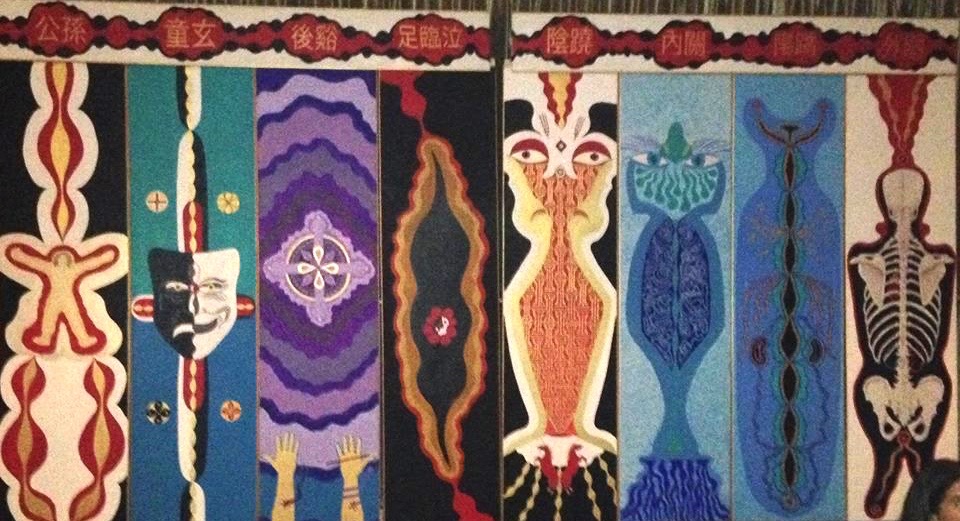“A person’s relationship to pain is made up of complex perceptions that are unique in each individual. Any comprehensive pain program must first understand and then address each of these influences that are at the “root” of the chronic pain.”
A commonly used medical definition of pain is an unpleasant sensory and emotional experience associated with actual or potential tissue damage. I appreciate this definition because it understands pain as a sensory and emotional experience. This definition requires any authentically comprehensive approach to pain to include both the sensory and emotional components and understand it as a human experience.
Acute pain is short lived & primarily associated with tissue damage from injury or illness before healing is complete. Acute pain is a symptom of an illness or threat . Acute pain is seen as having value as a normal warning system.
Chronic pain, on the other hand, is pain that lasts long enough or is intense enough to affect a person’s normal activities and well‐being. To be considered chronic, the pain must last for at least 1 to 3 months. Chronic pain can be the result of an injury or illness but continues after expected recovery time. It is not necessarily related to tissue damage. Chronic pain can be intermittent or constant but usually involves some baseline of pain. Chronic pain is no longer viewed as a symptom of an illness but as a discrete illness in and of itself. Medically speaking, chronic pain has no value or benefit as a warning system although, on a deeper level, it may reflect and be the manifestation of ongoing functional and psycho-spiritual imbalances.
Science does not have a complete understanding of pain although it has observed some of the mechanisms of pain. The understanding of the exact nature of the processes within the body that lead to the unpleasant sensation of pain is still evolving.
Here is one very simple and useful view of how we experience pain. For the purpose of our discussion, let’s say we puncture our finger:
1. The pain receptors ( nociceptors) in our finger are activated by tissue damage (trauma)
2. A signal then travels the peripheral nerve to the spinal cord.
3. Within the spinal cord, chemical messengers (neurotransmitters) are
released & activate other nerves that pass the signal to the brain.
4. Within the brain, the signal gets to the thalamus (inner chamber). The thalamus then sorts and sends signals to the somatosensory cortex (sensation) frontal cortex (thinking) and limbic system (emotions).
It is very important to understand that the experience of pain can be modified or intensified anywhere along this pathway!
Science & the types of pain
Based in part on where the distortion occurs in this pathway, medical science has identified four basic “types” of pain: Nociceptive Pain, Neuropathic Pain Pyshcogenic Pain and Idiopathic Pain
Nociceptive pain is when the normal process of stimuli damages normal tissues or has the potential to do so if prolonged. It can affect the bones, joints, muscles, skin, connective tissue and the internal organs.
Neuropathic pain is the abnormal processing of sensory input by the peripheral or central nervous system. It can be centrally generated or peripherally generated.
Psychogenic pain is pain that results from a psychological disorder, such as depression or anxiety. In this case the psychological issues are not as a result of the pain.
Idiopathic pain is pain that exists with no known physical or psychological cause. The cause of the pain is not detectable with our current medical knowledge.
Developing Chronic Pain
There are many influences that lead to a person developing chronic pain. Three areas that can be of great benefit to focus on are the relationship to pain, underlying mechanisms & existing pathologies and environmental factors.
A person’s relationship to pain is made up of complex perceptions that are unique in each individual. This is influenced by personal history, family culture and environmental factors.
There may also be underlying mechanisms & existing pathologies that contribute to developing chronic pain. These can include pathogens such as chronic viruses or mold, imbalances in the gut microbiome or functional disturbances in any of the organ systems.
Chronic activation of pain pathways include structural or functional changes in the the peripheral nerves, spinal cord or changes in the structure and chemistry of the brain.
Any comprehensive pain program must first understand and then address each of these influences that are at the “root” of the chronic pain.
Chronic pain and the issues that arise
When a person develops chronic pain there are many issues that may arise for them to deal with. These may include social factors (changes in family and work) , flare ups,(bad days) pain modulation,(dealing with the pain daily) inaccurate conceptualization, (how they view themselves and others) avoidance,(extreme fear) expression disharmony (changes in affect) and catastrophising.(exaggerated negative response to pain) . It is extremely important to note these issues are a result of the chronic pain and the unique history and physical/emotional/spiritual make up of the person. Unfortunately, chronic pain sufferers, especially those experiencing these issues, are often blamed for their condition rather than understood and supported. I have found this “ blaming the victim” manifesting with the family members, friends, work associates and healthcare providers working with chronic pain sufferers. A comprehensive approach to pain must address these issues as an integral part of the healing process.
The Extraordinary Vessel Model for understanding and treating pain
The Extraordinary Vessels are one of the world’s oldest systems for understanding and positively influencing the human experience. Evolving originally in ancient China, the Extraordinary Vessels were used in cultivation practices (Shamanism, Alchemy, Qi Gong, Meditation, Breath and Movement) long before they appeared as part of acupuncture. As a style of acupuncture the vessels are the most primordial pathways. They influence on the deepest level the must fundamental functional and structural aspects of the body. The vessels treat the patient as a unified whole of mind, body and spirit. Generalized stress patterns, chronic habituated movement and emotional patterns, and generalized areas of contraction and inflammation are identified and addressed in a simple, global and effective manner.
The extraordinary vessels also address the deepest levels of the sensory, emotional, spiritual and social experience allowing them to effectively address all levels and aspects of the chronic pain experience.
Extraordinary Vessel paintings by James Hanlon
End of Part 1: Coming Next: Treating Chronic Pain!


